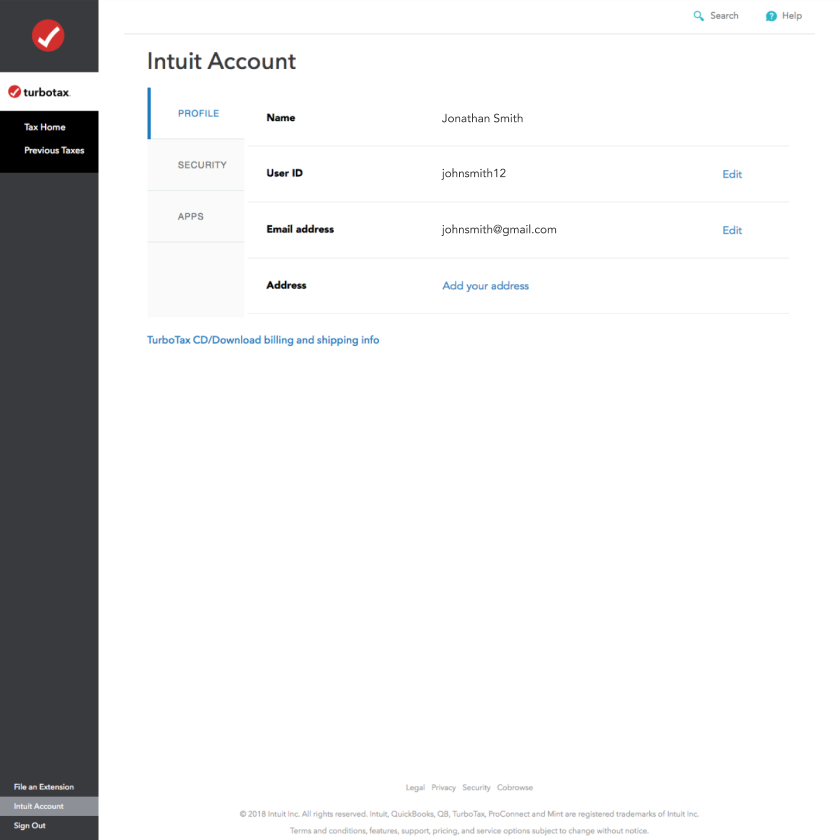02 | CASE STUDY (2020)
Connecting the ecosystem from a platform perspective
I led a variety of initiatives and platform capabilities such as Authentication, Mergers and Acquisitions, Identity Proofing and Financial Identity. This use case will review the redesign and rebuild of the Account Management experience for all Intuit products.
Overview
After the Intuit rebrand, the company began to connect the ecosystem and prioritize multi-product customers. However, it was extremely difficult for Intuit customers to access and manage their Intuit account and data because each product had bespoke methods and access points. This caused users to make mistakes and sometimes call for help.

WEB

NATIVE
This decentralized strategy resulted in over 3M support calls every year (roughly ~$44M).
 This is 3.5x more, for customers that can’t sign in and just give up.
This is 3.5x more, for customers that can’t sign in and just give up.

INTUIT (HOSTED)

TURBOTAX (WIDGET)

QUICKBOOKS (WIDGET)

MINT (API)

I have spent over 12 hours trying to talk/chat/email with support about my email addresses, user names, and products I have that are associated with my email addresses, usernames and other identifying info. NO individual that I have interacted with that can discuss ALL the products I have or may have with Intuit. They ONLY can discuss the product that they are associated. Understanding that over the years I may have used several of the products.
So therefore, I have to guess which of the 15 products and services I have, connect with them via username and emails, and then ONLY discuss that ONE product...
July 2019

Provocations & Explorations
This design led initiative began in 2019 with a bold vision, while exploring new frameworks and system elements. Ironically, new laws and compliance regulations like GDPR and CCPA came into effect which helped us prioritize and govern these experiences for all Intuit products.

PREVIOUS EXPERIENCE

NEW VISION

TARGET STATE
MVP Design
Towards the end of our design phase, the Intuit Design System completed the new product shell. We applied those new elements and scaled back our target state design to test against baseline. In addition to these iterations, we also contributed the One Intuit Account Access experience back to IDS.


Scalable Frameworks
Before this initiative, it was slow and difficult to build new experiences based on the monolithic framework and our centralized identity model. Therefore, we transformer this capability into a contribution platform while adopting a hub & spoke framework. This enabled any team to contribute an experience and achieve their individual business goals.

HUB

CATEGORY PAGE

SPOKE
The initial redesign drove an 18% increase in engagement in TurboTax & Quickbooks, and a 5% directional decrease in contacts in QBO.
21M
Annual visits32.7%
CTA engagement(was 12%)
66%
CTA conversion(was 48%)
0.74
Task completion(per session)
Enhancements Over Time
The new design successfully launched in July 2020. Since then, Identity and several other teams have enhanced the overall experience to solve many customer problems. During this time my role evolved too, shifting away from individual contributor and towards manager.

Post MVP
Here is a short list of Identity experiences that were implemented post MVP with only one developer allocated to this domain.
- Updates to IA to extend our contributions
- Next Best Action model using ML to help customers find what they need.
- Qualtrics survey to ask customers what they like and don’t like and measure NPS
- Added popular actions for direct link to spokes that drive the most business impact
- Created and added product and account switching to provide access across the ecosystem
- Added product suggestions for market awareness without it being an advertising portal